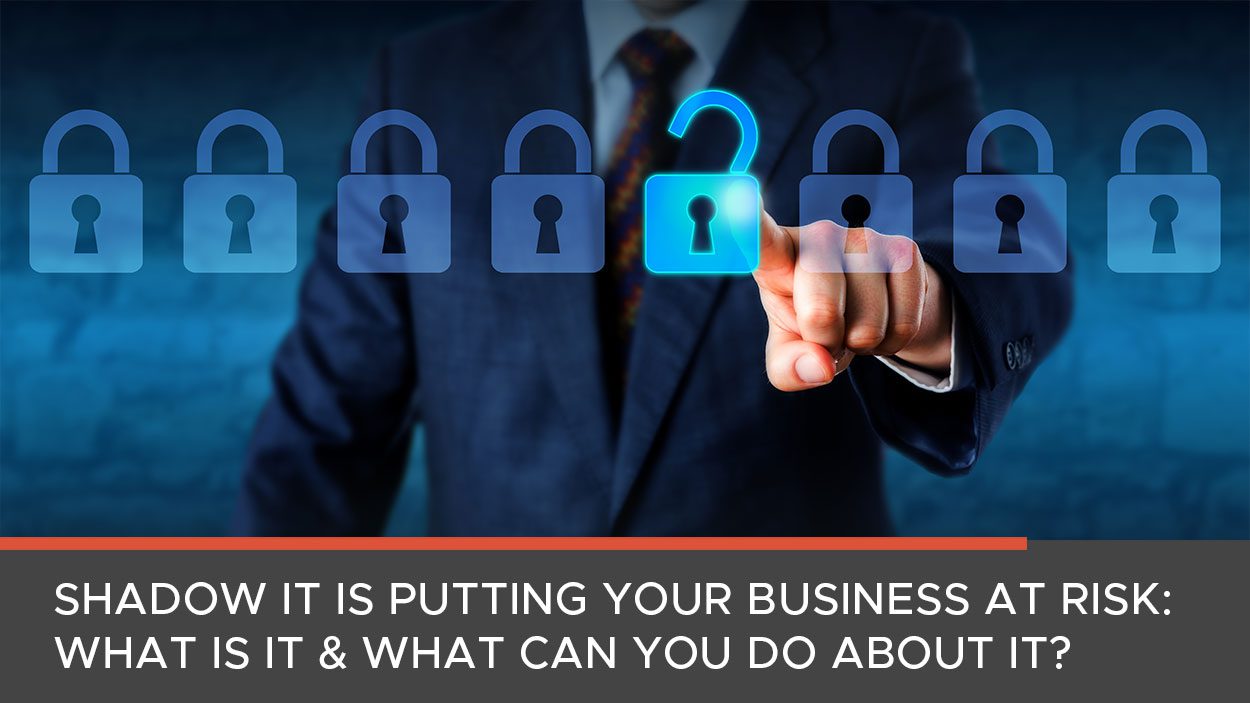Every CIO and IT professional knows that one of their most important jobs is defending the company against cyber threats. This requires everything from implementing business-specific security protocols to picking the right antivirus software.
However, it must also involve addressing shadow IT risks that could unnoticed for years, despite potentially devastating effects.
What Is Shadow IT?
Shadow IT occurs when a company’s employee or even the entire department uses software or hardware without the business’ IT team knowing about it. A typical example is an employee using their company-owned computer to access social media or using their personal laptop to do work (without approval), securing all of these connected devices is vitally important.
While some examples of shadow IT involve the employee doing something they know they shouldn’t (e.g., using their company-issued smartphone to access Facebook), the problem can also be the result of perfectly sincere intentions. A manager may make his team download productivity or messaging apps to help improve performance without seeking approval from the IT department first.
2 Shadow IT Risks That Threaten Modern Companies
Even when employees use unapproved technology with the best of intentions, there is still severe shadow IT risks that companies need to understand. The most important two are as follows.
1. Data Breaches Are Only a Matter of Time
One of the most common ways shadow IT damages companies is through data breaches. After all, most companies already struggle with IT security issues. Often, it’s their employees who pose the biggest threat, even when they’re using company-provided technology.
IT departments have no control over personal mobile devices, though, so an employee who accesses their company’s network through their iPad provides the perfect opportunity for a cybercriminal to “walk in” undetected.
Similarly, downloading an unapproved program can offer the same open door. At most companies, software updates are carried out automatically. Among other reasons, this is vital because software patches keep cybercriminals at bay. An employee who uses their programs on company devices connected to the network may not practice the same diligence, which is exactly what cybercriminals love to see.
2. Data Loss May Occur Due to a Lack of Backups
Cybercriminals aren’t the only reason there is significant shadow IT risks companies need to avoid. Other commonplace risks represent much bigger threats when IT departments aren’t involved.
For example, another task most IT departments are responsible for is overseeing regular backups of critical apps and software, so if anything unexpected happens, no vital data is lost. Unfortunately, the IT team can’t do this if they don’t know about a program that is running, much less one that a department is using for critical work.
2 Ways to Protect Against Shadow IT
As devastating as shadow IT could be for a company, there is plenty of CIOs and IT departments can do to prevent the problem from occurring must like turning into an actual threat.
Here are the two best solutions.
1. Make Policies 100% Clear
Believe it or not, many employees may genuinely not know they aren’t supposed to use unapproved technology. For companies that have adopted a Bring-Your-Own-Device policy, this may be an especially blurry line for many.
This is why businesses should make their rules crystal clear during new-employee orientation and send out reminders throughout the year. Ignorance is a very preventable reason for security breaches and data losses.
2. Provide a Clear Path to Suggesting New Tech
Shadow IT often appeals to employees who feel their only other option is to continue following bottlenecked procedures while they wait for the IT department to complete a lengthy approval process.
Given the risks involved, that justification is still insufficient. Nonetheless, it’s important to consider that many employees are well-intentioned when they adopt new technology without approval. Their initiative in looking for different solutions may be a sign that the CIO or IT department is out-of-sync with the company’s internal customers.
That’s worth considering. At the very least, though, companies should make it clear how employees can go about suggesting the software or hardware they’d like to use. If they don’t get approved, be sure to give them a specific reason. This may help them decide on a better solution to suggest in the future.
Treating the Threat of Shadow IT as a Priority
Shadow IT doesn’t always see the attention it deserves. At some companies, it’s an open secret that upper-management often uses their own devices when they’re on the go or downloads their favourite programs.
However, given the threats to companies posed by shadow IT risks, these kinds of behaviours should never be overlooked. CIOs need to treat shadow IT with as much seriousness as they do phishing emails and other common cyber threats. Doing so will not only keep their companies safer; it will also lead to improved processes for suggesting better solutions to common challenges – a real win/win.
Read about other trends dominating the office technology industry in our Technology Trends Guide.
Cory Porteous
Director of Marketing & Inbound Business Development
Office Interiors




